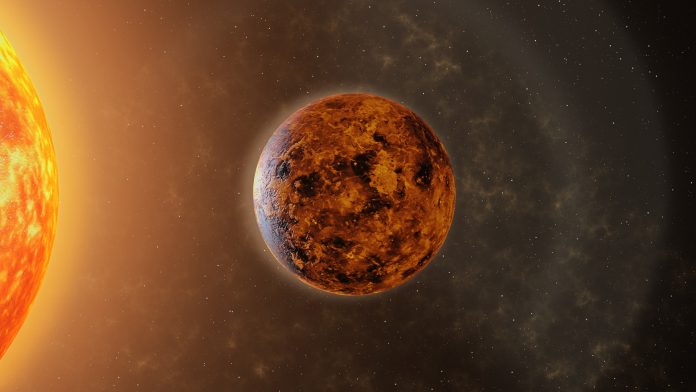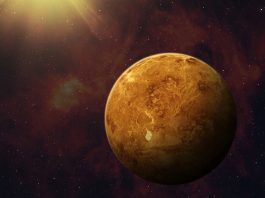The European Space Agency (ESA) has announced EnVision, its next groundbreaking Venus mission that is scheduled to launch in the early 2030s.
The mission will be the ESA’s fifth medium-class mission of the Agency’s Cosmic Vision plan. This novel Venus mission aims to obtain a comprehensive analysis of the planet from the fiery depths of its core to its upper atmosphere, providing insights into why Venus and Earth experienced such dissimilar evolutions.
Günther Hasinger, the ESA Director of Science, said: “A new era in the exploration of our closest, yet wildly different, Solar System neighbour awaits us. Together with the newly announced NASA-led Venus missions, we will have an extremely comprehensive scientific programme at this enigmatic planet well into the next decade.”
Venus is the closest neighbour to Earth in our solar system, and although being of comparable size and composition, is the polar opposite of our habitable planet; a drastic climate change in the history of Venus imbued it with a highly toxic atmosphere, with its skies obscured by sulphuric acid-rich clouds. This new Venus mission will uncover the mysterious origins of the planet, answering vital questions, such as is it geologically active or not? Was it once home to vast oceans? Or, potentially, once capable of sustaining life as we know it?
Envision will be outfitted with state-of-the-art European instruments, including a sounder capable of analysing underground layering and spectrometers that can examine trace gases in its atmosphere and the composition of the planet’s surface to reveal characteristics indicative of volcanism. Working in tandem with this will be specialised radio equipment that will investigate the internal structure, gravity field, and atmospheric composition of Venus, with this extensive analysis equipping scientists with a thorough understanding of processes taking place on the planet.
The EnVision Venus mission is the successor of the Venus Express mission that was primarily aimed at atmospheric research between 2005 to 2014; Venus Express attained valuable information about potential volcanic hotspots on the planet and has been supplemented by data obtained by the JAXA’s Akatsuki spacecraft that has been in operation since 2015. EnVision will collaborate with NASA’s upcoming DAVINCI+ (Deep Atmosphere Venus Investigation of Noble gases, Chemistry, and Imaging) and VERITAS (Venus Emissivity, Radio Science, InSAR, Topography, and Spectroscopy) missions, which will build upon surface radar images collected in the 1990s by NASA’s Magellan.
Günther said: “EnVision benefits from collaboration with NASA, combining excellence in European and American expertise in Venus science and technology, to create this ambitious mission. EnVision further strengthens Europe’s role in the scientific exploration of the Solar System. Our growing mission fleet will give us, and future generations, the best insights ever into how our planetary neighbourhood works, particularly relevant in an era where we are discovering more and more unique exoplanet systems.”
Thomas Zurbuchen, NASA’s associate administrator for science, commented: “We are thrilled to contribute to ESA’s exciting new mission to investigate Venus. EnVision leverages strengths in instrument development by both our agencies. Combined with NASA’s Discovery missions to Venus, the science community will have a powerful and synergistic set of new data to understand how Venus formed and how the surface and atmosphere changed over time.”
The EnVision Venus mission will now progress into its definition phase – where the design of the instruments and satellite is completed – with a European industrial contractor then chosen for the building and testing of the mission ahead of its launch upon an Ariane 6 rocket. The ESA estimates that the earliest opportunity to launch EnVision will be 2031, with further options in 2032 and 2033. The Venus mission will take 15 months to reach the planet and an additional 16 months to reach orbit circularisation, with its quasi-polar orbit lasting for a duration of 92 minutes at an altitude between 220 and 540 kilometres.









